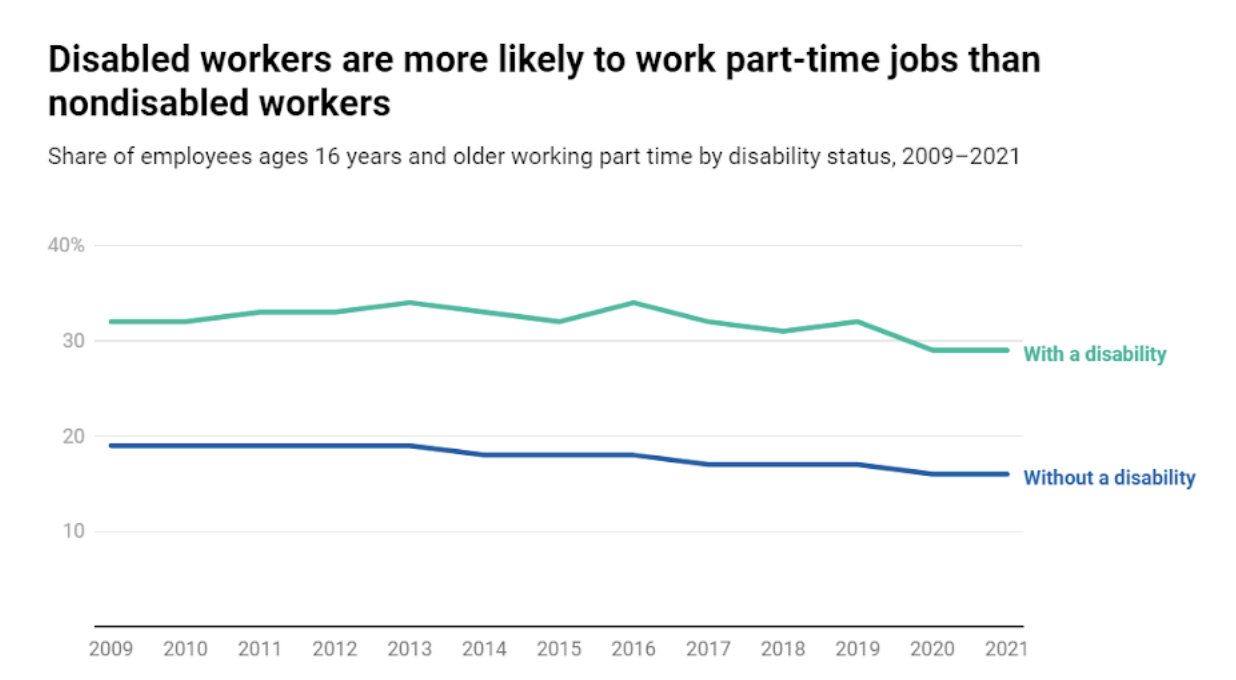Employment
Just as it is for any individual, employment is an important issue for people with disabilities. It is a means to make a living, to pay for necessary support, services, and healthcare, and to fully engage and participate in society.
Help AAPD End Subminimum Wages for Disabled Workers!
The Department of Labor is currently conducting a review of the future viability of its program that allows disabled workers to be paid below minimum wage, also called 14(c) certificates. AAPD and many other disability organizations are fighting to eliminate sub-minimum wages for disabled workers at the federal level, as 15 states have already done. There are many advocacy opportunities for the community to activate right now.

The ADA was amended in 2008 to restore the civil rights of Americans with disabilities and overturn four Supreme Court decisions that had inappropriately narrowed the protections of the ADA. The Americans with Disabilities Act Amendments Act (ADAAA), signed by President George Bush on September 25, 2008, emphasizes that the definition of disability should be construed in favor of broad coverage of individuals to the maximum extent permitted by the ADA and generally shall not require extensive analysis.
Facts and Figures
- In October 2022, the labor force participation rate for disabled adults was 38.7% vs 77.1% for nondisabled adults (DOL)
- In October 2022, the unemployment rate for people with disabilities was 8.2% vs 3.3% for people without disabilities (DOL)
- If disabled workers experienced the same employment rate as those without a disability, nearly 14 million more disabled people would have been employed in 2021 (CAP)
- In 2021, 29% of workers with a disability were employed part-time vs 16% for those with no disability (BLS)
- Disabled workers earn 66 cents for every $1 made by those without a disability (CAP)
- In 2021 the jobless rates for Black disabled adults (15.1%) and Hispanic disabled adults (13.3%) were higher than the rates for White disabled adults (9.3%) and Asian disabled adults (8.5%) (BLS)

Source: Removing Obstacles for Disabled Workers Would Strengthen the U.S. Labor Market, CAP (2022)
Policy Position
AAPD works to eradicate discrimination against people with disabilities by advocating for vigorous enforcement of the Americans with Disabilities Act (ADA) and including employment opportunities for people with disabilities in job creation measures and federal investments.
AAPD will advocate for policies that ensure unbiased hiring practices for people with disabilities, equitable treatment throughout their employment, and the delivery of fair wages (i.e. the elimination of subminimum wages).
National Disability Employment Awareness Month
Every October the United States observes National Disability Employment Awareness Month (NDEAM), and this month we are embracing the official 2022 theme, “Disability: Part of the Equity Equation,” by raising awareness of the Transformation to Competitive Integrated Employment Act and pushing Congress to pass it.
The Transformation to Competitive Integrated Employment Act (TCIEA) would phase out the subminimum wage provision over a five-year period and would provide states, employers, and any relevant agencies with the resources they need to support people with disabilities. It would encourage competitive integrated employment, which refers to disabled employees working alongside nondisabled employees, earning the same wage for the same tasks, and receiving similar opportunities for promotion and advancement. Here is a detailed fact sheet on the TCIEA and here is a simplified version created by the Association of University Centers on Disabilities (AUCD). AAPD has created a Social Media Toolkit designed to use the power of Twitter, Facebook, Instagram, and any other platforms for TCIEA advocacy and outreach.
